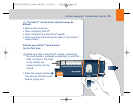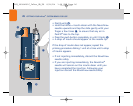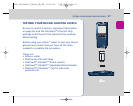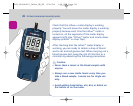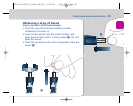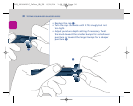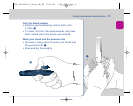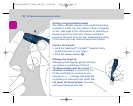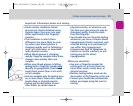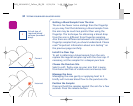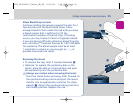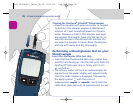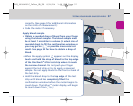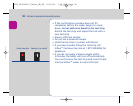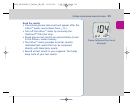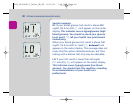
TESTING YOUR BLOOD GLUCOSE LEVELS 33
Important information about arm testing
• Under certain conditions, blood
glucose test results obtained using
samples taken from your arm may
differ significantly from fingertip
samples.
• The conditions in which these
differences are more likely to occur
are when your blood glucose is
changing rapidly such as following a
meal, an insulin dose, or associated
with physical exercise.
• When blood glucose is changing
rapidly, fingertip samples show these
changes more quickly than arm
samples.
• When your blood glucose is falling,
testing with a fingertip sample may
identify a hypoglycemic (low blood
sugar) level sooner than a test with
an arm sample.
•
Use arm samples only for testing prior
to, or more than 2 hours after, meals,
insulin dose, or physical exercise.
• Testing performed within 2 hours
after meals, an insulin dose or
physical exercise, or whenever you
feel that your glucose levels may be
changing rapidly, should be done
from the fingertip.
• You should also use fingertip testing
whenever you have a concern about
hypoglycemia (insulin reactions) such
as when driving a car, particularly if
you suffer from hypoglycemic
unawareness (lack of symptoms to
indicate an insulin reaction), as arm
testing may fail to detect
hypoglycemia.
What you should do:
•
Use arm or fingertip samples for
testing prior to, or more than two
hours after, meals, insulin dose, or
physical exercise.
•
Routine testing before meals can be
done either at the fingertip or the arm.
• Consult your healthcare professional
before you begin using the arm for
testing.
DCO_06084101C_InDuo_OB_US 8/16/04 1:08 PM Page 33



